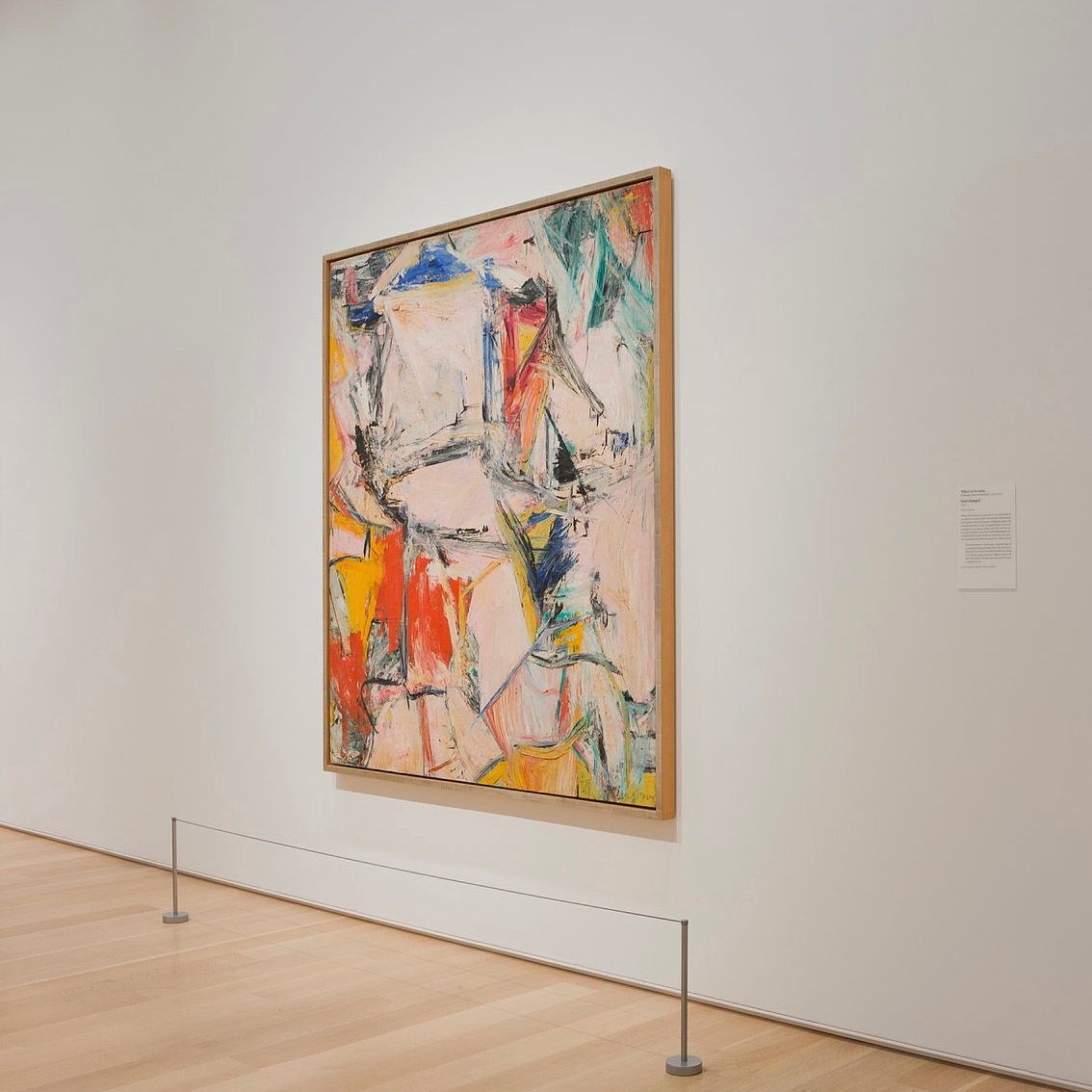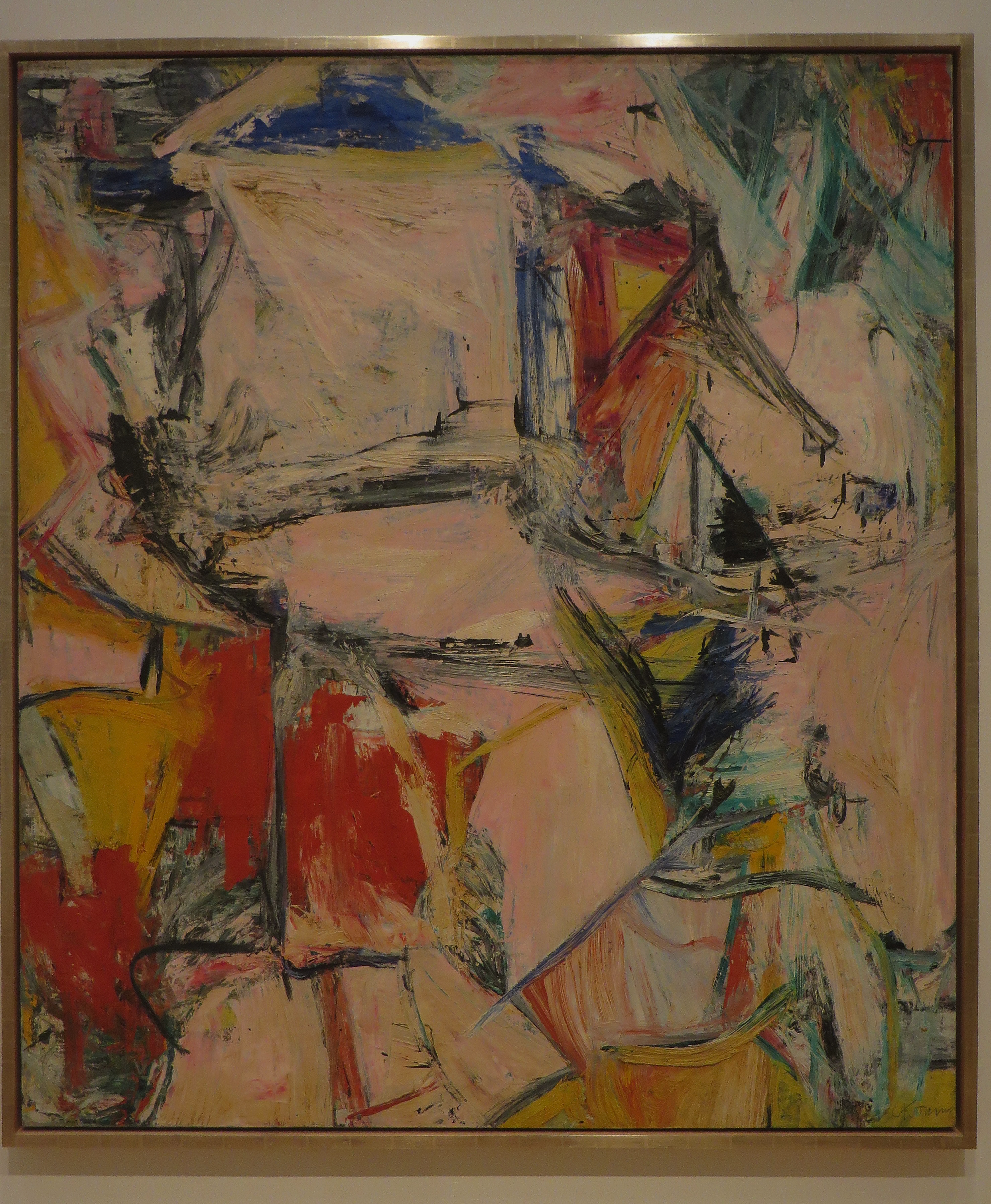
Willem de Kooning (Netherlands/America, 1904-1997)
Interchange
oil on canvas
200.7 x 175.3 cm. (79 x 69 in.)
Painted in 1955

A founding father of the Abstract Expressionist movement, Willem de Kooning, along with painters like Jackson Pollock, Mark Rothko and Franz Klein, permanently changed the history of modern art, relocating its centre from Paris to New York after World War II.
However abstract, his work was often figurative — particularly so, among his peers — and saw many distinct phases throughout his long career. He rejected the notion of style, which he called ‘a fraud’. ‘To desire to make a style,’ he once said, ‘is an apology for one's anxiety.’ De Kooning’s paintings and drawings regularly command soaring prices at auction: in 2018, his masterpiece Woman as Landscape (1954–55) sold for a record-breaking $68.9 million at Christie’s New York.
De Kooning was born in 1904, in Rotterdam, Holland, where he spent the whole of his youth. His was a prodigious talent: at 12 years old, he began studying to be a commercial artist, and later took classes at the Rotterdam Academy of Fine Arts and Techniques, where he further refined his skills. Even his work as a teenager reveals de Kooning to have been an innately masterful draughtsman, obsessed with detail. Like Picasso or an expert jazz musician, his mastery of the fundamentals provided the basis from which his radical innovations later sprung.
In 1926, he stowed away on a freight ship to New York and spent the first decades of his life there working illegally as a carpenter, window dresser and sign painter. In 1935, he joined the Federal Arts Project, a New Deal creation designed to provide financial relief for working artists. He quit the next year over fears about his immigration status, but the FAP had given him his first taste of working as an artist full-time, an experience he resolved to prolong.
De Kooning was 43 by the time he appeared in his first solo show in 1948; for his third solo show in 1953 he debuted his famous Woman series — shocking, dense abstractions in scraped and slathered impasto. They caused immediate controversy among traditionalists and Abstract Expressionists alike. It made him one of the world’s most famous painters.
In 1962, de Kooning became an American citizen and bought an oceanside house the following year in East Hampton, Long Island, where he lived the rest of his days. His art underwent a noticeable change, as the jagged, aggressive, revisionary lines of his New York City years gave way in the 1970s to a more fluid, organic line, reflecting the natural splendour of his new surroundings.
By the 1980s, de Kooning had refined his paintings down the barest figurative gestures. Women were a recurring, dominant subject in his paintings and occasionally in sculpture. At some point in the 1980s, he began developing Alzheimer’s disease, which ravaged his memory over time, though he continued to paint. De Kooning died in 1997 at the age of 93.










